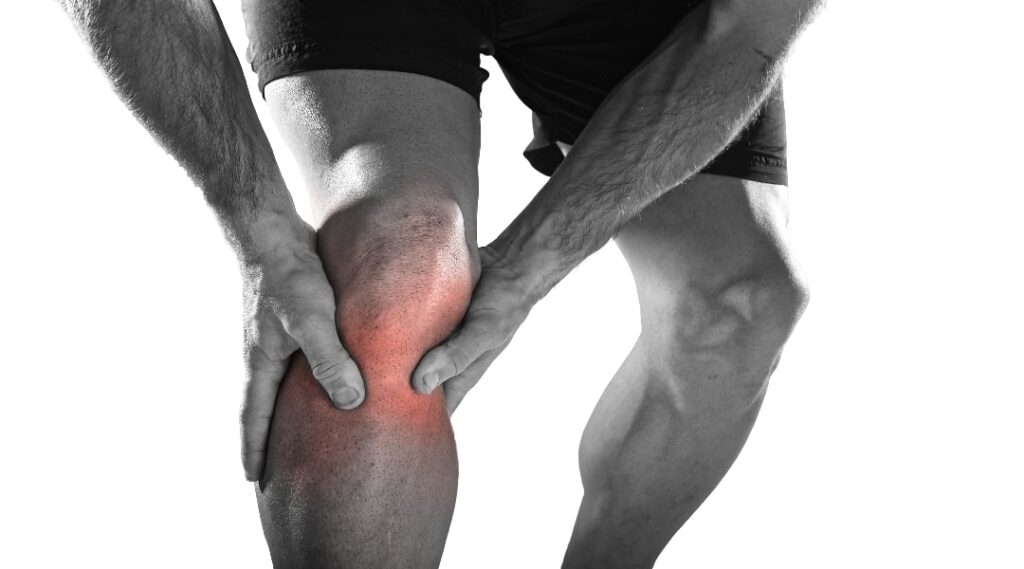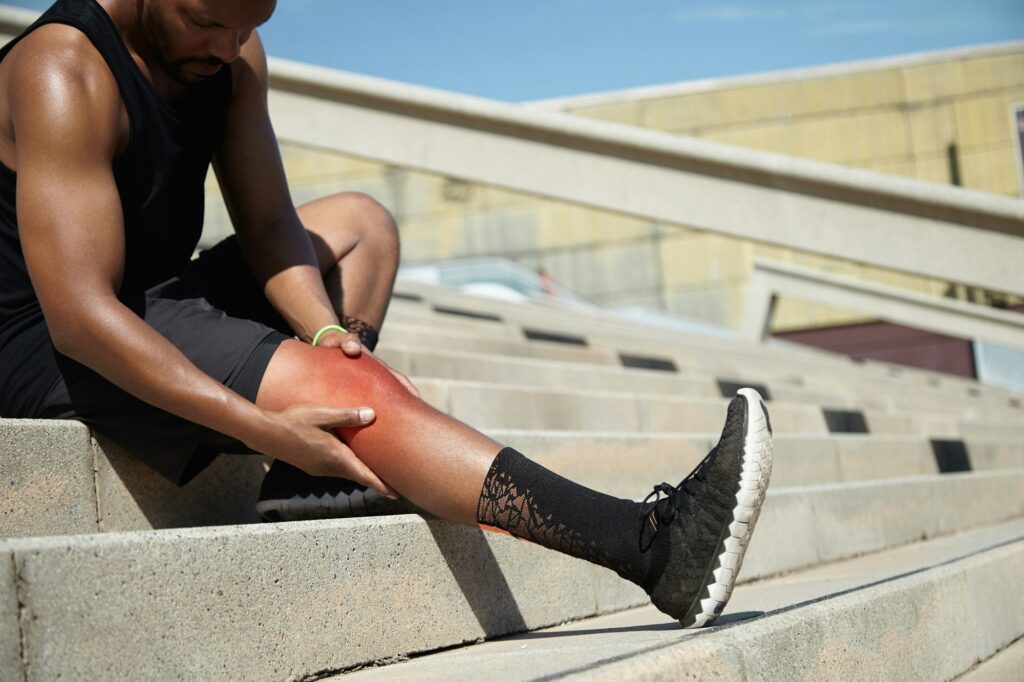Table of Contents
Introduction
Any injury to the knee can be a painful and frightening experience – knee ligament injuries especially so.
In many cases, you may have been feeling just fine until you made a sudden twist or received a sudden blow to the knee. You might have heard a pop or snap, followed by your knee swelling up and feeling weak. This often (but not always) comes with a rush of severe pain, too.
Whenever you suspect a ligament injury to your knee – or experience any sort of knee injury that leaves your knee painful, swollen, and/or unstable – please contact us right away. Receiving the proper treatment in good time will greatly reduce your risk of further injury or complications.
If a knee ligament is injured, our first step is identifying which one.
What Are Knee Ligaments?
A ligament is a thick, stretchy band of tissue that connects one bone to another. Typically, part of their job is to provide stability to a joint, where two bones meet.
The knee has four major ligaments that run between the thighbone (femur) and shin bone (tibia).
- The anterior cruciate ligament (ACL), which is found in the center of the knee and aids in the rotation and forward motion of the tibia.
- The posterior cruciate ligament (PCL), which is found in the back of the knee and helps move the tibia back.
- The medial collateral ligament (MCL), which connects the femur and tibia on the inside of the knee.
- The lateral collateral ligament (LCL), which connects the femur and tibia on the outside of the knee.
Of these four ligaments, the ACL is the one that is most commonly injured, and the most you are likely to hear a sports commentator talk about when a player is carted off the field. That doesn’t necessarily mean all supposed ACL injuries you hear about actually are, though.

How Do the Knee Ligaments Become Injured?
The different ligaments tend to have different ways of becoming strained or torn, and symptoms can vary somewhat.
The ACL is often injured when the knee experiences a sudden twisting motion. Often the feet will stay planted in one direction against the ground while the knee is forced in the other direction. Sports with a propensity for fast pivots and turns, such as basketball, football, and skiing, tend to see more ACL injuries.
The PCL, MCL, and LCL are more guarded against injuries from twisting. However, they can still become injured by sudden impacts, such as from tackles or accidents.
ACL and PCL injuries do not tend to cause pain as much as injuries to the MCL or LCL. All situations, however, may come with a popping sound at the time of injury, followed by swelling, instability in the knee, and trouble bearing weight on the leg (which you should not try to continue doing). Not every case will exhibit the same symptoms.
Treating Knee Ligament Injuries
Before recommending any treatment plan, we must determine the location and severity of an injury. This will involve a physical examination and talking with you to learn the circumstances surrounding your injury and its effects on your comfort and mobility. Any information you can provide us is helpful, so please don’t hesitate to mention any additional details you might feel are important.
Depending on the case, we may also need to verify an injury via imaging or other diagnostic procedures. These might include X-rays, an MRI exam, or other tests. We may need to make sure a broken bone or sprain is not the actual cause of your symptoms.
For many less severe ligament injuries, we may recommend allowing the ligament to heal through rest and conservative treatments. Such a plan might include:
- Pain-relieving medication
- A protocol of icing, elevation, and/or wrapping of the knee
- Simple stretches and exercises to increase strength and stability in the muscles and soft tissues surrounding the knee
- The use of protective braces and equipment, either during work/exercise or full-time for a certain period
In more severe cases, or cases that do not respond well to conservative treatments, we may need to consider surgery instead.
A surgical procedure might involve repairing or replacing the ligaments using similar tissue. This tissue may be taken from tendons within your body or from a cadaver.
However, most knee ligament injuries will not require surgery. If surgery becomes a consideration for you, we will be happy to discuss all your options and answer any questions you may have.
The Help You Need for Knee Pain and Instability
It is very important to ensure any knee ligament injuries or other supporting parts are addressed in the best way possible. Doing so helps reduce the chances of chronic pain and instability in the future, as well as complications such as arthritis.
Our orthopedic experts are here when you need them. Call us at (916) 961-3434 to schedule an appointment at either of our offices in Carmichael or Roseville. We also schedule telemedicine appointments if you prefer your first consultation be performed remotely – but you should expect such an injury to require in-office attention.
Looking to schedule an appointment with a physician?
Schedule an appointment with us by calling (916) 961-3434 or by clicking the button below to begin requesting your appointment today!





